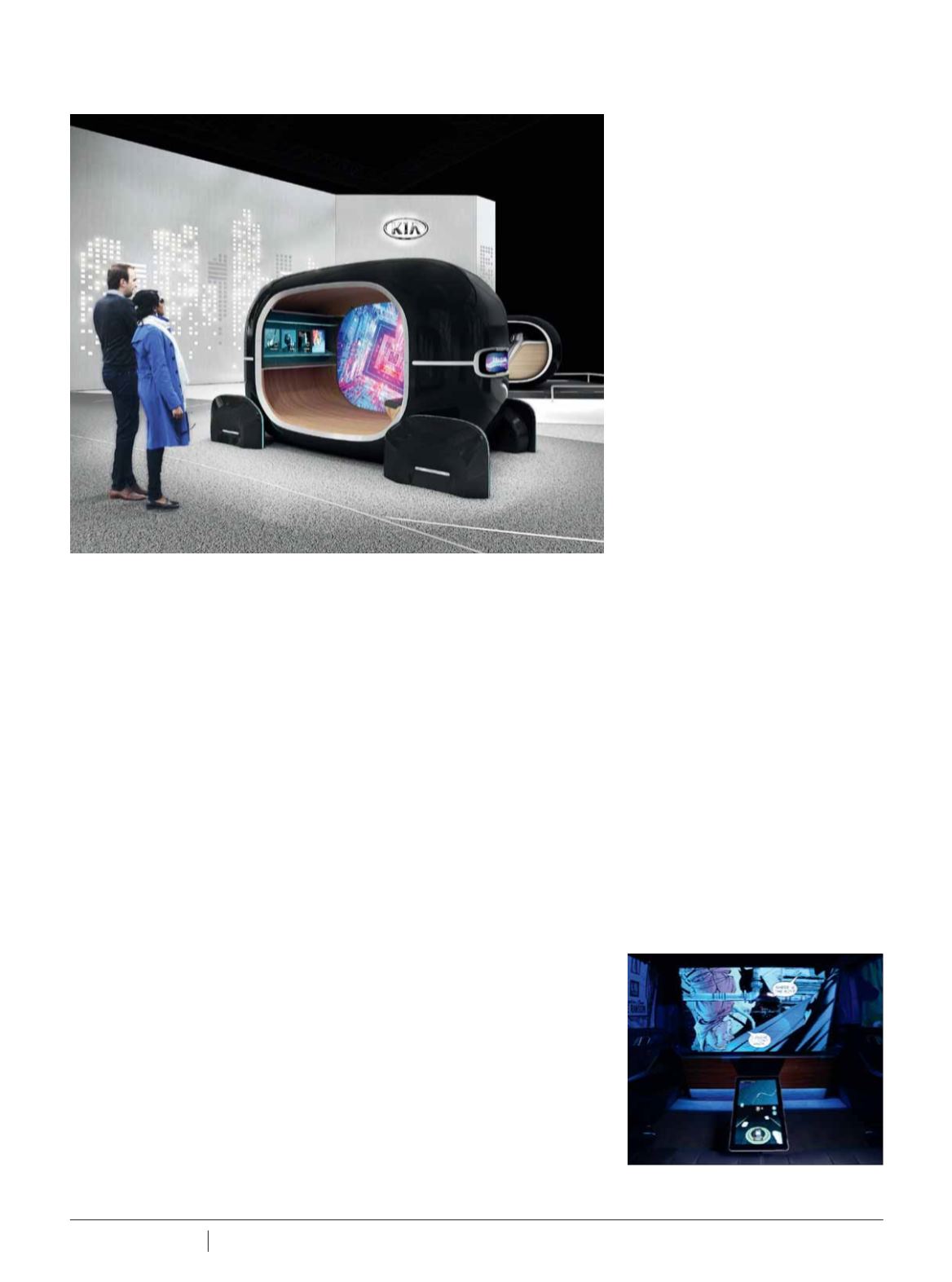

5 8
ACROSS THE TRADES Spring 2019
will be applied to enhance the driving
experience.
Sorry, that should be ‘human mobility
experience’ given ‘driver’ will by then be
an archaic term and the cabin will not
be encumbered with a steering wheel
and other controls. It will be more like
the home or office, where technology
dominates, and at CES Kia turned up
with what it claims is “the automotive
industry’s first technology converging
human senses-oriented in-cabin
environment control and AI-based
emotional intelligence”.
Or, to put it more simply, the tech
is called READ, short for Real-time
Emotion Adaptive Driver.
Developed in collaboration with the
Massachusetts Institute of Technology,
the READ system is designed to
optimise and personalise the cabin
space by analysing a driver’s emotional
state in real time via AI-based bio-signal
recognition tech.
Kia says the technology monitors a
driver’s emotional state using sensors to
read his or her facial expressions, heart
rate and electrodermal activity. It then
tailors the cabin environment according
to its assessment in an effort to create “a
more joyful mobility experience”.
AI deep-learning technology enables
the system to establish a baseline
in user behaviour, and then identify
patterns and trends to customise the
cabin accordingly.
Forming part of the READ system
is another claimed world first in the
form of virtual touch-type gesture
control technology. Dubbed V-Touch,
this application employs a 3D camera
to monitor users’ eyes and fingertips
and allows the occupants to control
cabin features such as climate, lighting
and infotainment via a head-up display
and using simple hand gestures, thus
eliminating the need for conventional
switchgear or even touch screens.
Capping it off, the READ system also
includes music-response vibration
seats, where occupants can ‘feel’ their
favourite songs as well as listen to
them. Sensory-based signal processing
technology adapts the seat vibrations
according to sound frequencies of the
music being played.
The vibrating seats also have settings
for massage and, should something
go wrong in this utopian accident-free
autonomous environment, can provide
haptic warnings from the advanced
driver-assist systems on-board.
Along similar lines, AI company
Nuance also used the CES to introduce
a new innovation in its ‘Dragon Drive’
intelligent automotive assistant platform
using voice, sight, gesture and emotion
interaction that “transforms it into a
conversational, humanised mobility
assistant that will be core to the digital,
button-free car of the future”.
AN ALTERNATIVE ROUTE
Just as Audi has forged close ties with
Disney, American tech giant Intel has
joined forces with Warner Bros – using
a specially modified BMW X5 SUV – to
explore the potential of next-generation
entertainment when the vehicles are
driving by themselves.
Kia’s future self-driving cars might
look to read the occupants’ mood,
but here Intel tech and Warner Bros
blockbusters combine to make the
journey one that could potentially be
‘controlled’ by a fictional character and
the trip itself set in a fictional place,
breaking the boredom of the daily
commute or a long-haul drive.
In this case, the virtual ride –
complete with giant screen, projectors,
sensory and haptic feedback and
immersive audio and lights – takes place
in Gotham City, moderated by Batman’s
trusted butler Alfred, who comes to
life, in a sense, by interacting with the
occupants, keeping them comfortable
and informed of actual events occurring
outside in the real world: traffic jams,
road closures, route changes, and so on.
But the chaperone/navigator could be
anyone or anything, and the environment
Kia monitors a driver’s emotional state using sensors to read their facial
expressions, heart rate and electrodermal activity.
A fictional trip hosted by a fictional
character, thanks to Intel and WB.
















